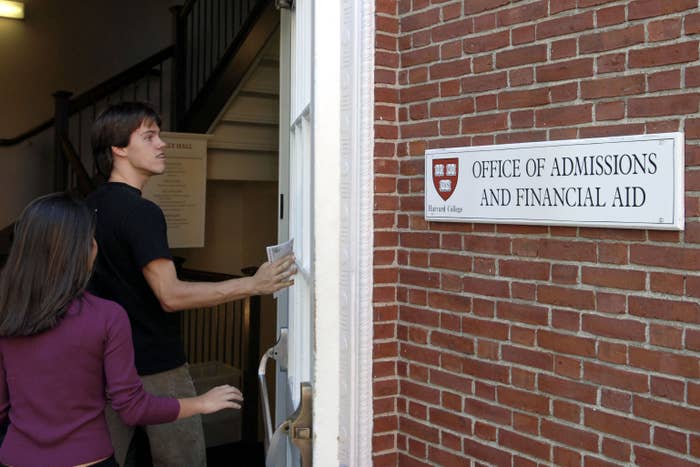
America's elite colleges often claim they offer a leg up to low-income students in the admissions process, allowing poor applicants to compete with students who have had advantages like prep school educations and SAT tutoring.
But in reality, the country's most selective schools have created an admissions process that systematically works against poor students, according to a report from the education and poverty-focused Jack Kent Cooke Foundation. Legacy students, under-represented minorities, and athletes get a boost in college admissions, but research shows that poor students get no advantage whatsoever at Ivy League and other top-tier colleges.
The effects can be striking: in Harvard's 2014 freshman class, more students came from the top 1% of income earners than from the bottom 50%. Here's how the foundation says elite schools "stack the deck" against poor students, even as they say they are working for economic diversity.
Academic indexes
Elite colleges develop formulas that grade applicants based on their "academic competitiveness." But because many poor students don't have access to Advanced Placement, International Baccalaureate, and other high-level courses, their academic indexes are often lower, the foundation said, meaning students aren't judged capable of doing elite college-level work.
The heavy emphasis on SAT scores in academic indexes, too, works against low-income college students, because far fewer poor students get advantages like SAT tutoring and classes. The SAT is trying to reverse that phenomenon by offering free SAT prep online, through Khan Academy.
Early admissions
Ivy League schools offer two different admissions cycles, something the report calls a "seemingly innocent" practice that can have serious consequences for poor students. Students who apply in the early cycle are as much as 20% more likely to be admitted, but low-income students rarely apply early, the report says. Doing so requires savviness and knowledge of the admissions process that many students without access to good high school counselors don't have.
Harvard and Princeton both ended their early admissions cycle in 2006 because of concerns that it was unfair to low-income students. But they both brought the practice back several years later when none of their competitors followed suit — mostly because they worried about losing students to schools like Yale and Stanford, which still offered early admissions.
Legacy admissions
For all the furor in the Supreme Court — and at Harvard — over affirmative action based on race, there's been much less accounting for the fact that many schools still offer preference to students whose parents attended the school, and especially to major donors. Sometimes called "affirmative action for the rich," legacy admissions leave low-income students at a disadvantage, the report says, because it means there are fewer spots. Harvard's admissions rate for legacies is 30%; its general admissions rate is 6%.
Legacy admissions, the report said, means that "competitive admissions applies only to the poor — while admissions to the wealthy is open to the highest bidder."

Affirmative action
Seen as an equalizer and a counterweight to the legacy of racism, affirmative action based on race can work against poor students, the foundation said, because it often gives preference to wealthy and middle-class minorities — leaving fewer spots for students in the bottom income quartile. Eighty-six percent of black students accepted at elite schools come from middle-class or wealthy families, the report said.
Athletic recruiting
Even athletic recruiting is stacked against poor students, according to the foundation: "The popular notion that recruited athletes tend to come from minority and indigent families turns out to be just false."
At elite colleges, scores of spots for recruited athletes go to those in sports like crew, sailing, and squash — sports that are largely unavailable to poor students.
